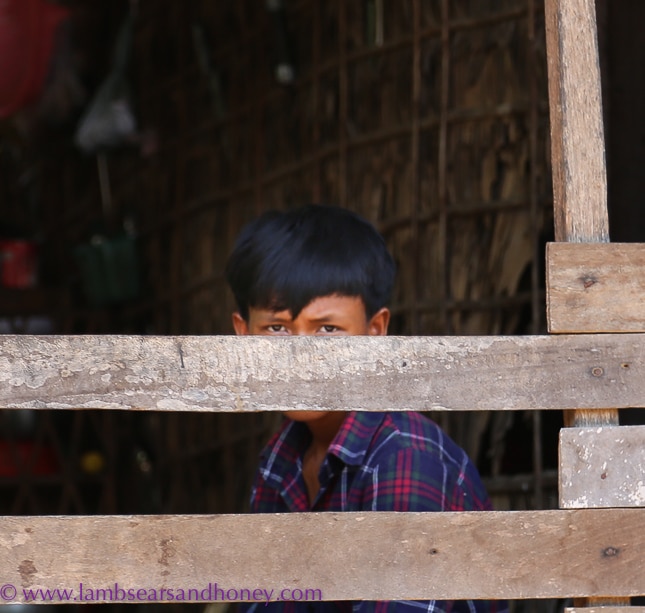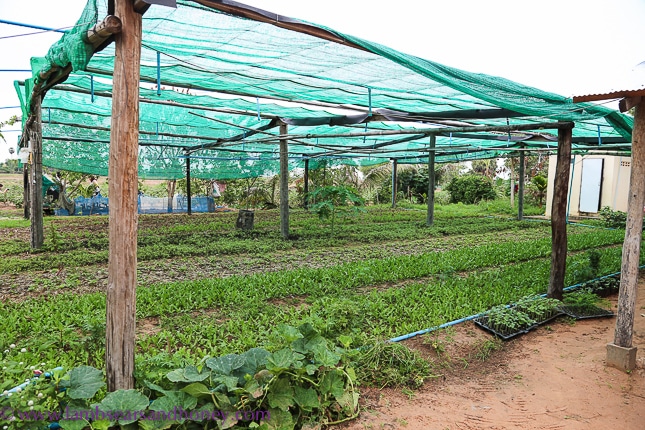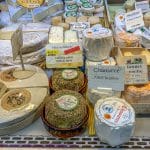Cambodian food production is still largely in the hands of small producers. I met three of these & observed a less industrialised form of food production.
Living our busy lives in our heavily industrialised world, It can be easy to forget that not everyone gets their food the same way we do. I recently got a close-up look at some Cambodian food production when I visited some local food producers who live in small villages outside Siem Reap. These producers make their food products the way they have for generations, while some are re-learning more traditional methods in order to avoid falling into debt.
My first visit was to a family who make rice noodles to sell in their local village market. Most of the family is involved and they start the process early in the day in order to have their work done before the heat of the afternoon sets in.
The process is fairly simple and involves making a very stiff dough from rice flour and starch. This is packed into a wooden canister which is then placed on a contraption with a large lever-operated press. The press of the family I visited was operated by a man sitting on the high end of it, using his weight to push the dough through the holes, extruding the noodles into a pot of gently simmering water on an open fire below. They spend a minute or two in the hot water before being scooped out, rinsed thoroughly and then folded into serving sizes and placed in a basket, ready for market.
Noodles are one of the staples of the Cambodian diet, usually served in a steaming, flavourful broth with vegetables, meat and lots of fresh herbs, but eating the silky fresh-made noodles with a sprinkling of stock powder right next to the family who made them is the kind of food memory I will hold forever.
Next we visited a traditional rice wine distillery. Again, the process is quite simple – fermented rice is left to quietly bubble in fresh rainwater for a few days, before being slowly distilled through a series of pipes. This is a traditional skill and some families have been making it for many generations, passing the knowledge down. The wine is used in ceremonies, as well as socially, and there is now a growing market for commercially produced rice wine infused with all kinds of different flavours.
Once again, this is a family affair and even grandma keeps herself busy, feeding the slow-burning fire under the still with the rice husks which fuel it – and keeping an eye on the family pigs which are kept nearby and are pretty laid back as a result of their diet of the rice wine by-products.
Finally, we met a farmer. Food security is an immediate issue for many in such a poor country as Cambodia. Cambodian food production is dominated by many small farmers. They can often become prey to rapacious big-agriculture companies who persuasively market GM seeds and the fertilisers and pesticides necessary to support the branded seeds. Naive and uneducated farmers can find themselves trapped in a spiral of debt and ill-health – the latter a result of not understanding how to protect themselves adequately from sprays.
One of the many non-government organisations (NGO’s) active in Cambodia is Agrisud International, a group devoted to fighting poverty by aiding and supporting small farming businesses. They assist producers to convert their farms to organic farming methods, train them in these methods and encourage successful organic farmers to recruit their peers and support each other. Those who adopt these methods are finding an eager market among city restaurants happy to pay good prices for organic vegetables and herbs.
We visited one of these farms and, while this farmer is still a very long way from easy street, he is enjoying great success with organic methods. He grows fresh vegetables and herbs on his limited property and was very excited about his newest crop – the just-emerging tips of organic asparagus. He was a delightful man – happily answering my questions via an interpreter and giving the group I was with permission to free-range his farm.
While there we also had a glimpse of how close each of these small land-holders is to financial collapse. The farmer next door had a cow whose new calf was not feeding. The country was in the grips of a calamitous drought, meaning inadequate water for stock, and the cow had no milk. Her calf, which represents a significant investment to the family, was limp and close to death as the owner desperately tried to hand feed it. As we left the farm I was not anticipating a happy outcome for that family, or their calf.
[mc4wp_form id="16750"]
























Thanks Amanda for these wonderful insights. Naturally I found this very interesting.
Amanda, there are some really special pix that you have taken in Cambodia. They are natural images not set up and are technically spot on, you should be proud of this collection!
Isn’t Cambodia fascinating. Those rice noodles were so delicious. We had so many bowls of that during our stay.
Thank you so very much, Grant – that means such a lot, coming from such a skilled photographer as yourself.
Nice work, Amanda! Great having you at the workshop. We hope to repeat it again in Siem Reap some time in 2017. We’re also planning a workshop for Italy this Spring. Stay tuned!
What a great story. Thank you so much for sharing.
Glorious memories of our trip, and time to spend with you. I have some photos of these same visits and there is no relationship!
Wonderful photos that tell a fascinating story. Thanks.